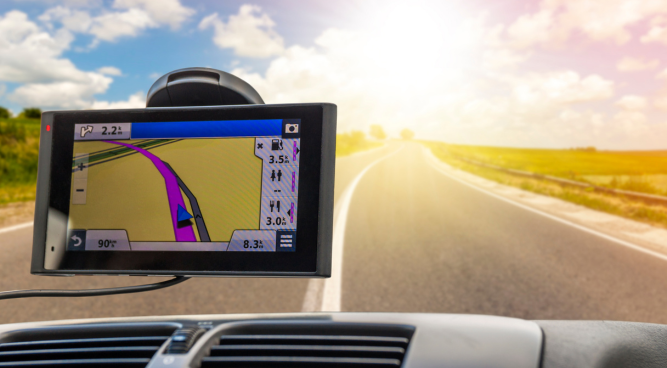Table of Contents
Introduction
National Travels and Carriers Tracking is a crucial aspect of modern transportation systems. In today’s fast-paced world, the efficient management and tracking of national travel and carriers have become pivotal. Whether it’s for logistical, security, or customer satisfaction reasons, having a robust system in place is essential. This article delves into the various aspects of national travels and carriers tracking, exploring the technology, challenges, benefits, and future prospects associated with this crucial field.
Video For You:
I. The Significance of National Travels and Carriers Tracking
Transportation as a Backbone of Modern Society
Modern society heavily relies on transportation, acting as the cornerstone of the worldwide economy. National journeys and carrier services constitute a pivotal facet of this infrastructure, spanning a wide array of transportation methods, including roads, railways, aviation, and maritime routes. Ensuring the secure, prompt, and dependable operation of these carriers necessitates effective tracking mechanisms.
The Role of Tracking in Safety and Security
National travels and carriers tracking also play a critical role in ensuring the safety and security of passengers and cargo. Tracking systems can help prevent accidents, monitor the location of assets, and enable a swift response to emergencies.
Customer Satisfaction and Expectations
With the rise of e-commerce and online services, customers have grown accustomed to real-time tracking and visibility into their shipments and travel plans. Meeting these expectations is vital for customer satisfaction and retaining a competitive edge.
Technology Behind National Travels and Carrier Tracking

GPS Technology
Global Positioning System (GPS) technology is a cornerstone of national travels and carriers tracking. GPS allows for accurate and real-time location tracking, enabling carriers to navigate efficiently and travelers to know their exact location.
Telematics and IoT
Telematics and Internet of Things (IoT) devices are essential components in tracking. These devices provide comprehensive data on carrier performance, driver behavior, and cargo conditions. The integration of telematics and IoT has revolutionized the trucking industry.
Data Analytics and Machine Learning
The massive amounts of data generated by tracking systems can be leveraged through data analytics and machine learning algorithms. These technologies provide valuable insights, enabling carriers to optimize their operations and improve efficiency.
Challenges in National Travel and Carrier Tracking
Data Privacy and Security
The collection and sharing of tracking data raise concerns about data privacy and security. Ensuring that sensitive information is protected is a constant challenge for both carriers and travelers.
Connectivity Issues
National travels may involve remote or geographically challenging areas with limited connectivity. Overcoming connectivity issues to maintain real-time tracking is a challenge faced by carriers.
System Integration
Integrating tracking systems with various carrier types, modes, and data sources can be complex. Achieving seamless interoperability is a challenge that requires standardization and collaboration.
Benefits of National Travels and Carrier Tracking

Improved Safety
The most immediate benefit of tracking is improved safety. Real-time data on carrier location and performance allows for proactive measures to prevent accidents and respond to emergencies.
Enhanced Efficiency
Tracking systems help carriers optimize their operations, leading to increased efficiency. Improved route planning, reduced downtime, and optimized fuel consumption all contribute to cost savings.
Customer Satisfaction
Real-time tracking not only meets customer expectations but also improves their overall experience. Transparency and visibility into travel and shipment status lead to higher levels of satisfaction and trust.
Environmental Impact
Efficient tracking systems can also have a positive impact on the environment. By optimizing routes and reducing fuel consumption, carriers can lower their carbon footprint.
Future Prospects in National Travels and Carrier Tracking
Artificial Intelligence and Predictive Analytics
The prominence of artificial intelligence (AI) and predictive analytics within tracking systems is anticipated to expand. AI possesses the capability to sift through extensive datasets and generate forecasts, thereby assisting carriers in making well-informed choices. (National Travels and Carriers Tracking)
Blockchain for Transparency
Blockchain technology holds promise for enhancing the transparency and security of tracking data. It can provide a tamper-proof and decentralized ledger of carrier information.
Integration with Smart Cities
As smart cities continue to evolve, integration with national travels and carriers tracking systems is likely. This can lead to more efficient urban transportation and reduce congestion.
Autonomous Vehicles
The advent of autonomous vehicles will have a profound impact on tracking. Self-driving vehicles are expected to improve safety and efficiency, but their integration into tracking systems presents new challenges and opportunities.
Closing Thought
National travels and carriers tracking is an essential part of our interconnected world, impacting safety, efficiency, and customer satisfaction. As technology continues to advance, the future of tracking promises even greater benefits and challenges. By embracing innovative technologies and addressing existing issues, we can continue to enhance this critical aspect of modern transportation. For more information please visit home.
Certainly, here are four frequently asked questions (FAQs) related to “National travels and carriers tracking”:
1. How can I track my parcel status?
Answer: You can track your parcel status by using the tracking number provided by the carrier or shipping company. Simply enter the tracking number on the carrier’s website or a tracking platform to get real-time updates on your parcel’s location and status.
2. How do I track an international parcel?
Answer: To track an international parcel, you will need the international tracking number provided by the carrier or postal service. Visit the carrier’s website or a global tracking service, enter the tracking number, and you will receive information about the parcel’s journey across borders.
3. What is the tracking number of the waybill?
Answer: The tracking number of the waybill is a unique identification number assigned to your shipment by the carrier. It serves as a reference for tracking your parcel. You can find this number on your shipping receipt or in the confirmation email provided by the carrier.
4. How do I track my Global Express tracking?
Answer: To track your Global Express shipment, use the tracking number associated with your parcel. Visit the carrier’s website or an international tracking service, enter the tracking number, and you will be able to monitor the status and location of your Global Express shipment as it travels globally.


